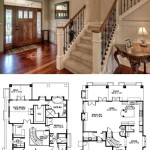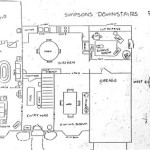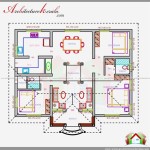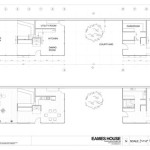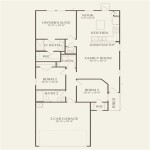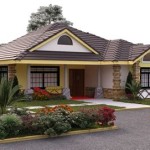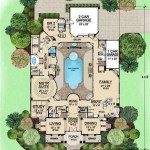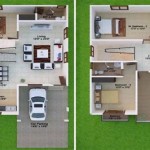Floor Plan of a Small House: Essential Aspects to Consider
Designing the floor plan for a small house requires careful consideration and strategic planning to maximize space utilization and create a comfortable and functional living environment. Here are some essential aspects to keep in mind when creating a floor plan for a small house:
1. Flow and Circulation
The flow of movement through the house is crucial to ensure a pleasant experience. Position rooms and spaces in a logical sequence, minimizing unnecessary backtracking and creating seamless transitions between areas. Consider the placement of doors, hallways, and stairs to facilitate easy flow and prevent congestion.
2. Open vs. Closed Floor Plan
Determine the extent of openness desired in the floor plan. An open floor plan combines multiple functional areas into one large space, creating a sense of spaciousness and fostering natural light circulation. A closed floor plan segregates spaces into separate rooms, providing more privacy and noise reduction.
3. Room Size and Function
Each room should have an appropriate size to accommodate its intended use while maintaining a sense of balance and proportion. Consider the minimum dimensions necessary for furniture placement and comfortable movement. Multifunctional spaces can maximize space utilization, such as a living room doubling as a dining area.
4. Storage and Accessibility
In a small house, storage becomes even more important. Plan for ample built-in storage solutions, such as closets, bookshelves, and under-bed drawers. Position storage spaces strategically for easy accessibility. Ensure accessibility for all areas of the house, including bathrooms, closets, and utility rooms.
5. Natural Light and Ventilation
Maximize natural light to create a more inviting and spacious feel. Position windows and doors to allow ample daylight penetration. Cross-ventilation promotes air circulation and reduces the need for artificial lighting and ventilation. Consider skylights or solar tubes to supplement natural light in interior spaces.
6. Privacy and Noise Control
Privacy should be considered when positioning private spaces like bedrooms and bathrooms. Create buffer zones or use soundproofing materials to minimize noise transmission between rooms. Strategic placement of windows and doors can also enhance privacy and reduce unwanted noise from outside.
7. Outdoor Connection
Establish a connection between the interior and exterior spaces. Incorporate patios, decks, or balconies to extend the living area outdoors. Large windows and doors can visually connect indoor and outdoor spaces, creating a sense of spaciousness.
8. Energy Efficiency
Consider energy efficiency when designing the floor plan. Orientation and window placement can optimize natural heating and cooling. Insulation and energy-efficient appliances can reduce energy consumption. Passive design techniques, such as cross-ventilation and daylighting, promote natural comfort and minimize energy usage.

Small House Plan Examples

10 Small House Plans With Open Floor Blog Homeplans Com

10 Small House Plans With Open Floor Blog Homeplans Com

Longshoremans Daughter Small House Floor Plans Tiny

Small House Plan Ideas For Diffe Area To See More Read It Floor Plans Kitchen

Small House Plans With Pictures Houseplans Blog Com

Small House Design Series Shd 2024008 Pinoy Eplans

27 Adorable Free Tiny House Floor Plans Small

These Small House Plans Pack A Lot Of Punch Houseplans Blog Com

Small House Designs Shd 2024001 Pinoy Eplans

